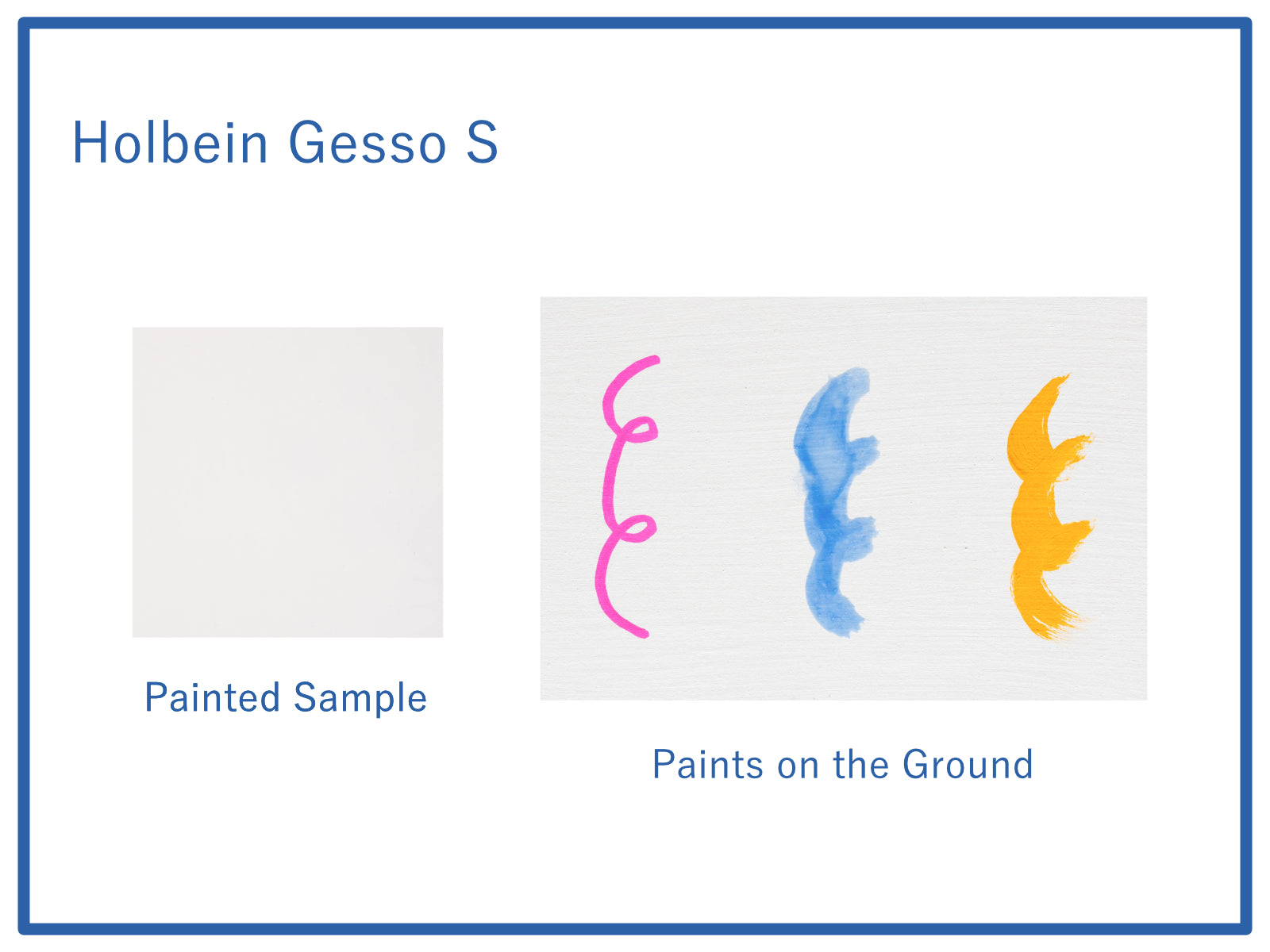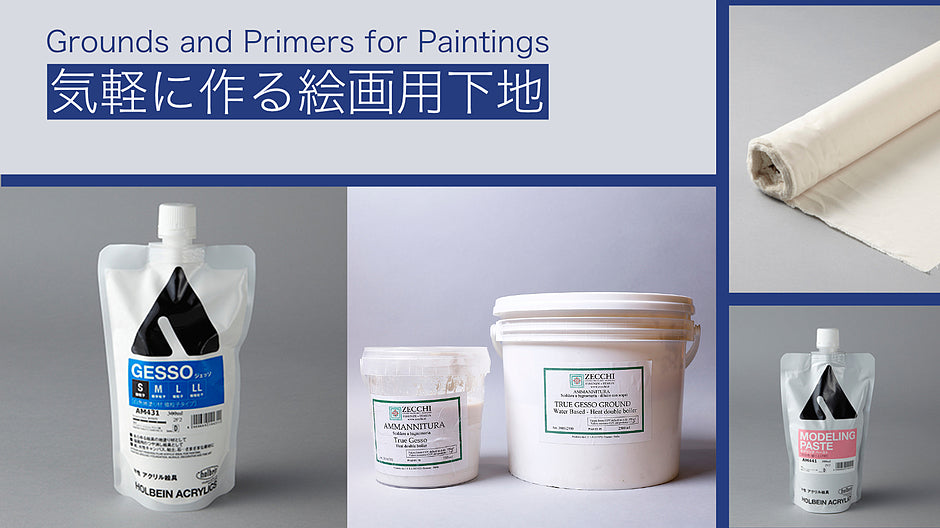The ways of preparing painting substrates and grounds that are originating from the West have changed over time.
For example, in the past, the main substrate for painting in Europe was wooden boards, but after the Venetian School was established in the late 15th century, canvases made of linen stretched over wooden frames emerged.
Gypsum plaster from Italy and chalk from Spain were the main extender pigments used as substrates, however, an extender pigment called Kaolin (高嶺) from Gaoling near Jingdezhen in Jiangxi Province, China, is also used in nowadays.
Back in the 19th century, painters used a variety of techniques on canvas to explore new forms of style and expression.
The Impressionists, led by Claude Monet, dared to use raw linen, which had not been primed, to retain the "living strokes" characteristic of oil paint on the canvas.
The French painter Jean Fautrier, in his "Hostages (Les Otages)" series, used paper pasted on canvas to create a physical presence of the paintings such as thick textured and flesh-like surface.
One of the joys of painting is to create a new style of expression by customizing existing materials.
However, it can be a painstaking process to find the right material that suits you best by experimenting with all kinds of them.
In this article, I would like to introduce a painting substrate that can be easily made from our art materials.
To show you the differences between these substrates, I painted four layers of paint with a flat brush on an illustration board covered with kent paper and then did a test drawing.
①HOLBEIN GESSO S
One of the most convenient painting bases.
This product has acrylic polymer emulsion as the binder, and titanium white (PW6) and calcium/magnesium carbonate (PW18) are kneaded into it.
This time, I used the "S" type, which has a small particle size, but there are also the "M" type with a medium size, the "L" type with a rough texture, and the "LL" type with a grainy texture.
The most notable feature of Holbein's Gesso is that it is easy to apply. It is a product that does not leave brush marks because it maintains a moderate viscosity suitable for flat application.
However, due to the use of acrylic emulsions, bubbles will form if the brush is rubbed hard against the surface, so it is necessary to apply layers of paint carefully.

【Art Materials Used】
Substrate: Kent paper
Color materials (from left to right): Water-based sign pens, transparent watercolors, acrylic paints
Here is how the paints look on the Holbein Gesso S.
The water absorbency is weak and the finish is smooth.
The sign pen is very easy to draw with and the acrylic paint gives smooth brush strokes and nice color. There is no color bleeding and it is a good primer for drawing.
However, with mediums that require good adherence to the substrate, such as transparent watercolors, the brush would slip making it difficult to draw well.
②Holbein Gesso S + Modeling Paste
Since I want to improve the absorbability of the gesso, I mixed some Modeling Paste to the Holbein Gesso.
Modeling Paste is a medium for acrylic paints that contain gel medium mixed with calcium carbonate as a binder.
It is mainly used with acrylic paints to create impasto effects.
Modeling Paste does not spread out well and is very hard to apply with a paintbrush, but once you mixed it with gesso, it produces a smoother paint texture and a better hold on the canvases.

【Art Materials Used】
Substrate: Kent paper
Paint materials (from left to right): Water-based sign pens, transparent watercolors, acrylic paints
This time, I mixed Modeling Paste with gesso at a ratio of 3 : 1 (Gesso : Modeling Paste).
As you can see from the painted samples, the tone is slightly darker than just the gesso alone.
Moreover, you can tell that there are some brush marks left on the painted surface of the Holbein Gesso S+Modeling Paste.
In terms of color saturation, the sign pen gave a slightly more subdued impression compared to the gesso-only surface.
The cohesiveness of the acrylic paints as well as the watercolors looks like they could be perfectly applied to the Holbein Gesso S+Modeling Paste ground.
If you increase the amount of Modeling Paste, the amount of water and oil absorption will increase, but the opacity will be reduced and the flexibility of the surface will be lost, so in that case, it is better to apply it on a substrate that does not loosen easily, such as a panel.
③Zecchi’s True Gesso (Rabbit Skin Glue Gesso)
Last but not least, the product I would like to introduce is Zecchi’s True Gesso.
In recent years, the term "gesso" has been used more often to refer to the ground mentioned in ① above that is used acrylic emulsion as the binder. However, the term "gesso" originally referred to a base coat made of rabbit skin glue.
Therefore, Zecchi’s True Gesso is a reproduction of the authentic traditional gesso by using Sottile white plaster and rabbit skin glue.
Making the traditional gesso with rabbit skin glues requires several processes, such as heating the glue up and sieving the Sottile white plaster, but what makes this product special is that you can apply it right out of the bottle.

【Art Materials Used】
Substrate: Kent paper
Paint Materials (from left to right): Water-based sign pens, transparent watercolors, acrylic paints
Since the gesso is contained in the bottle as a hard paste, it should be diluted with 20-30% water depending on the substrate.
Do not apply too thickly at one time, as this may cause the gesso cracks.
Compared to acrylic base gesso, Zecchi’s True Gesso requires a little more work just to apply, but once it’s done, you can create a smooth, velvety surface for your paintings.
Let's take a look at how the paints are tried on the True Gesso.
You can see that the color of the sign pen is quite subdued, which is noticeable when compared to the ① which has a more slippery surface.
Acrylic paints, as well as watercolors, have a matte finish because the paints are cohesive onto the base.
In addition,② contains acrylic emulsion and gel medium as the binder, which has a rather cooler tone, while True Gesso uses rabbit skin glue to give a warmer tone.
In this article, I applied the gesso coats to an illustration board as a sample, but it is possible to create a more customized painting ground by applying it to a panel covered with "Tenjiku Cotton," which is also available in the PIGMENT TOKYO online store. It is also possible to purchase linen from a fabric store and then prime it with rabbit skin glue to apply these gesso grounds.
There are so many variations of painting ground that can be created with different combinations of products you can find in the art supply stores.
It may be a good idea to reconsider “what kind of base coat is best for your paintings” to achieve your ideal painting surface texture.






